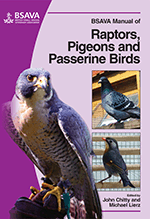
Full text loading...

When a live bird is presented for euthanasia and post-mortem examination it is a good habit to collect as much blood as possible from the right jugular vein: this will provide haematological and biochemical values in addition to the necropsy findings. This chapter evaluates haematology, cytology, microscopic evaluation, microbiological culture, diagnostic tests for infectious diseases, tests for specific conditions in raptors and post-mortem examination.
Clinical pathology and post-mortem examination, Page 1 of 1
< Previous page | Next page > /docserver/preview/fulltext/10.22233/9781910443101/9781910443101.9-1.gif

Full text loading...



















